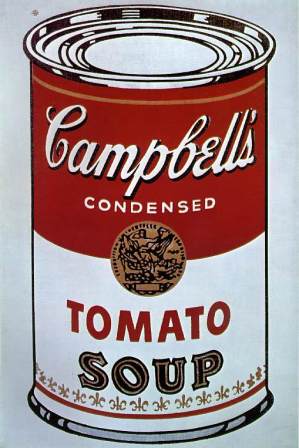Review on youtube video; Introduction to Pop Art.
The video explains the pop art movement during 1950s and 1960s in Britain and the US. Pop art began to inspire artists in Britain in 1950s when consumer boom, mass-produced products, and entertainments exploded. It celebrates the new consumer dominated era. Artists’ works are based in everyday environment such as adverts, comics, slogans and media, bold flat arrangements of colour. Some of the well know pop artists are- Andy Warhol, Richard Hamilton, and Keith Haring.
This video was made in 2004 and although the image of pop art being of young, glamorous, and popular stays pretty much the same, I think the intendment has changed. Pop art intended to communicate the viewers through accessible manner, similar to television and pop music and this had made people question whether pop art was high or low art. Nowadays, I feel pop art is in favour of high art as you see many of them in museums and pop art artists are making fortune out of it but also I think they are making a blurred boundary between commercial art and fine art. Such as Takashi Murakami and Yayoi Kusama both considered as pioneer/guru of Pop Art movement. They both work with a wide range of medias including corroboration with Louis Vuitton, which is highly commercialised field. Louis Vuitton and Kusama Yayoi’s collaboration collection overtook all the 24 show windows in Selfridges in August 2012.
Pop art is not about the celebration of the booming mass products after the Second World War anymore. We’re in the constant explosion of mass-produced goods and entertainment that pop art itself became a somewhat transient product.
I found this interesting article on online guardian articles, I thought was relevant to what is going on in pop art at the moment.
http://www.guardian.co.uk/artanddesign/jonathanjonesblog/2012/feb/09/warhol-murakami-pop-art
